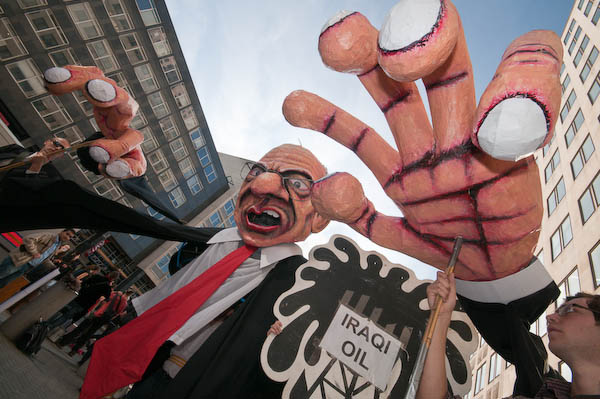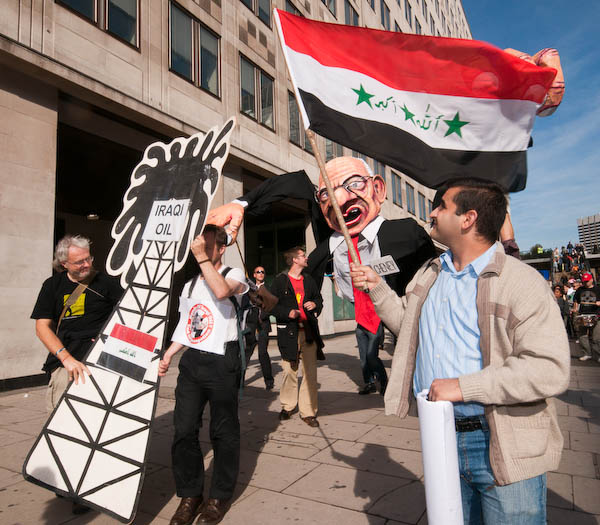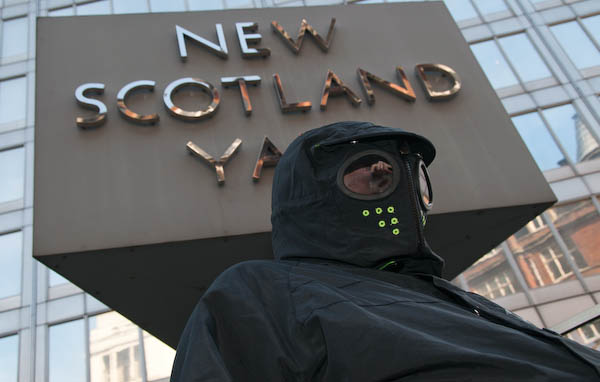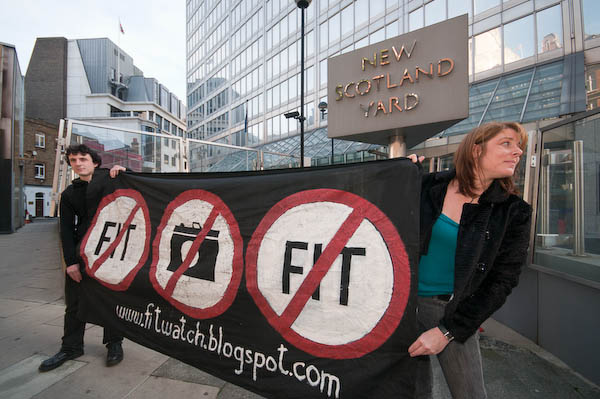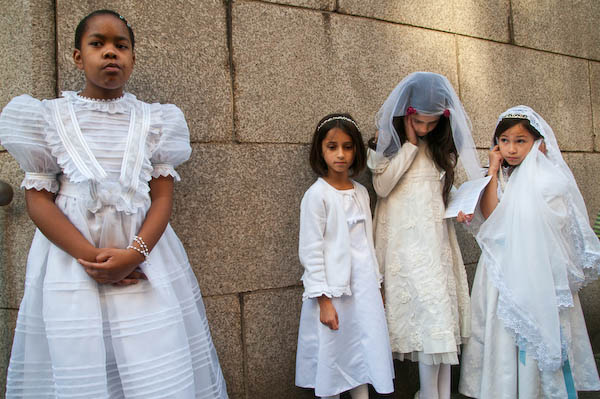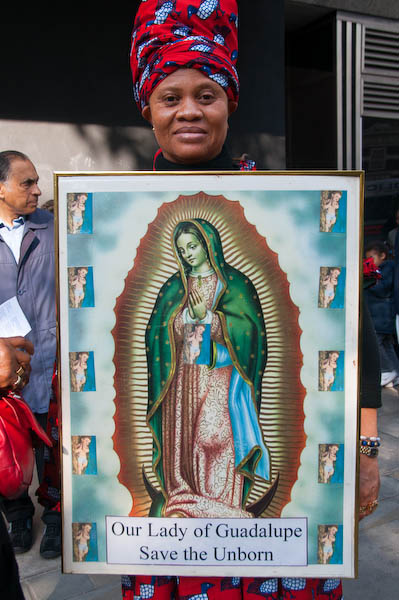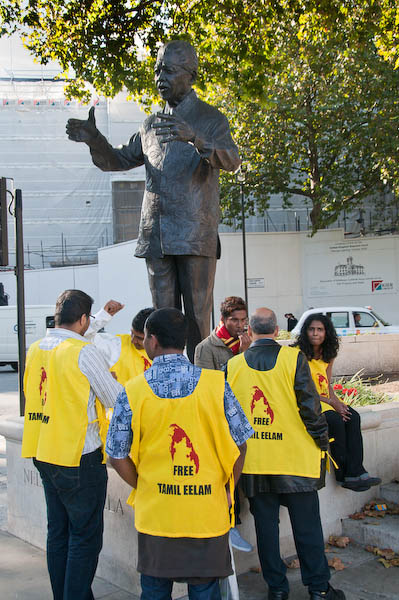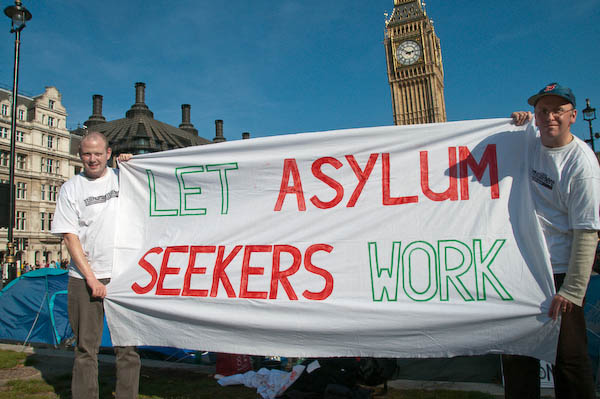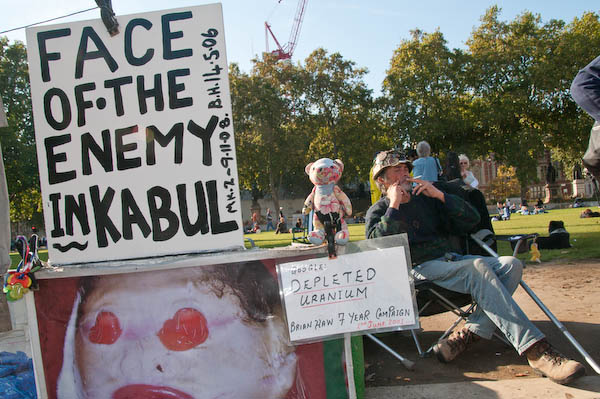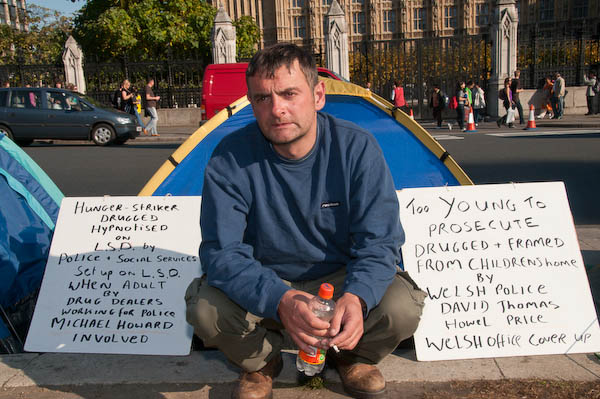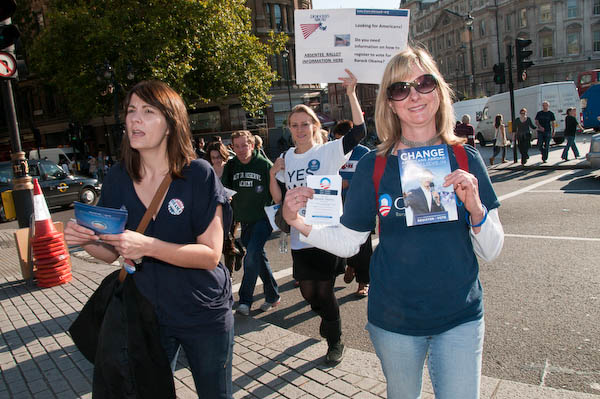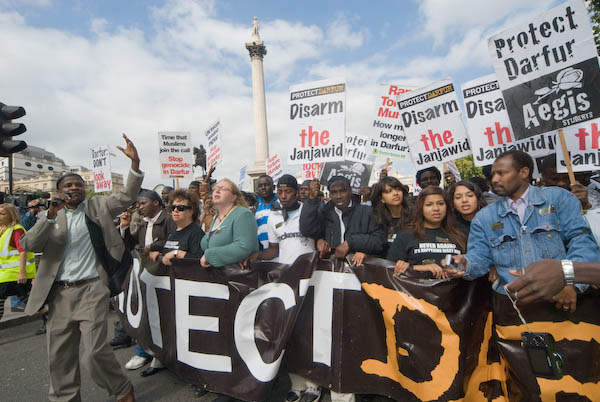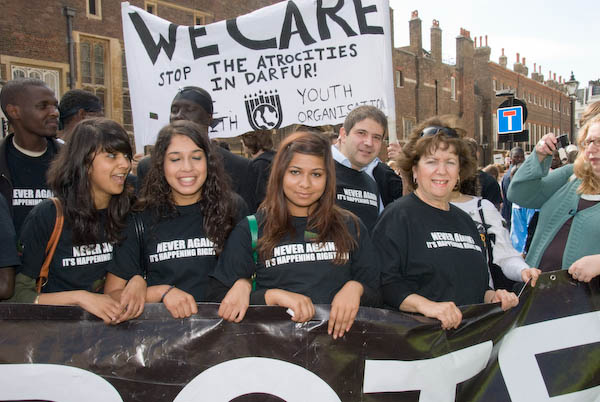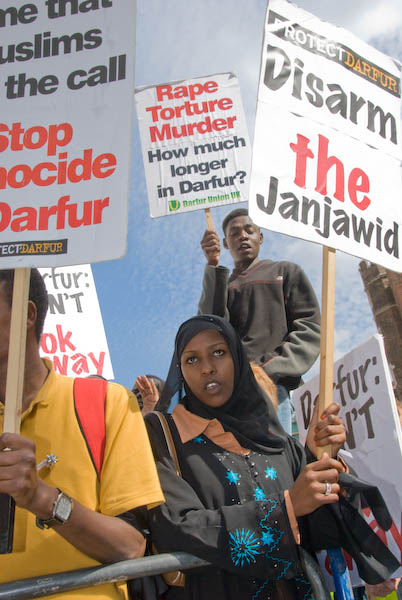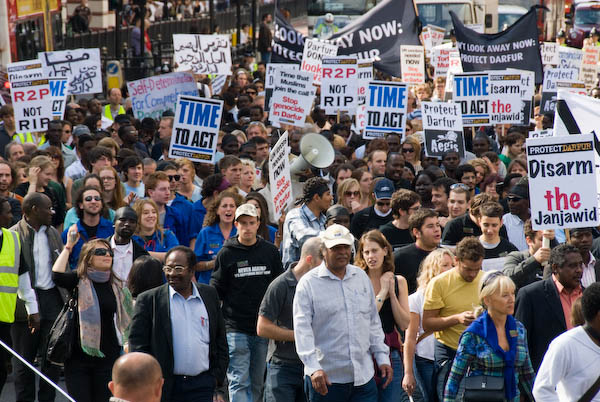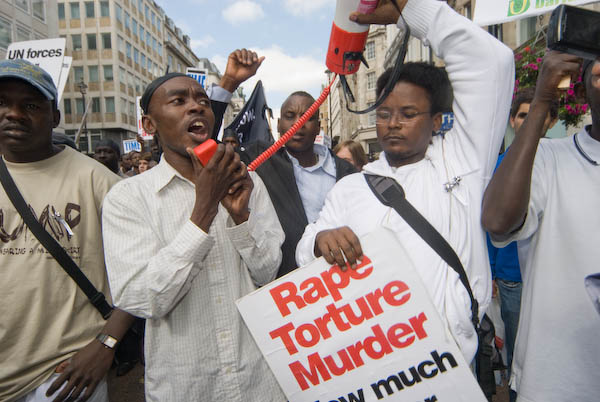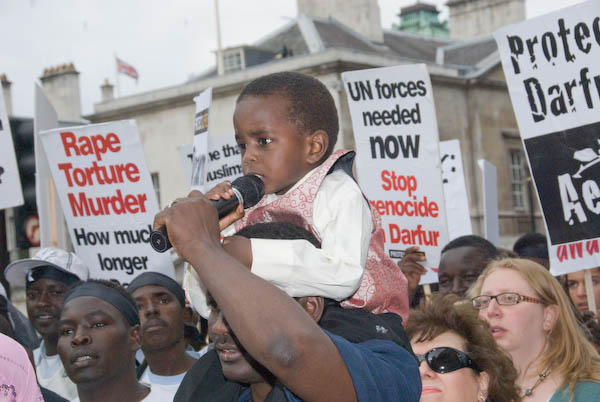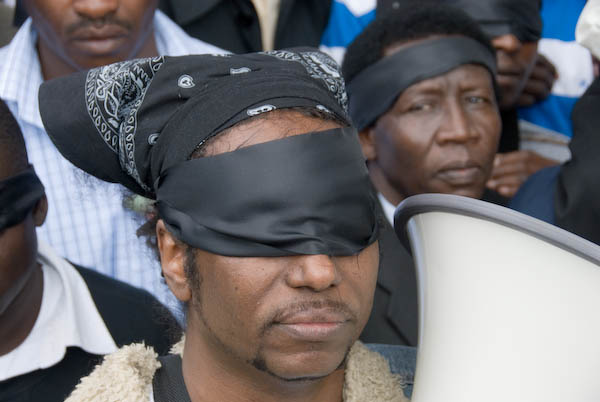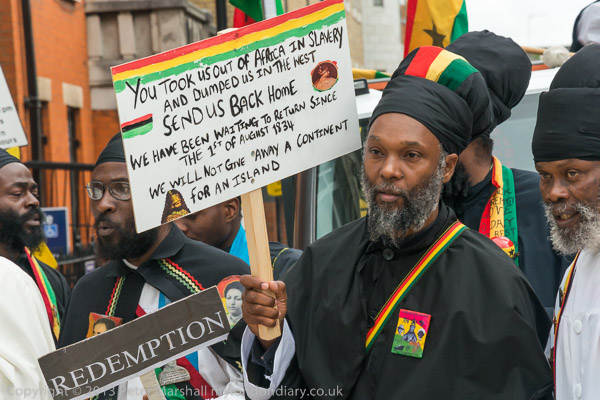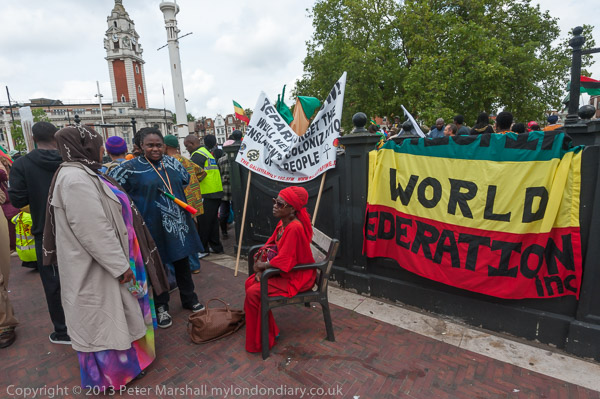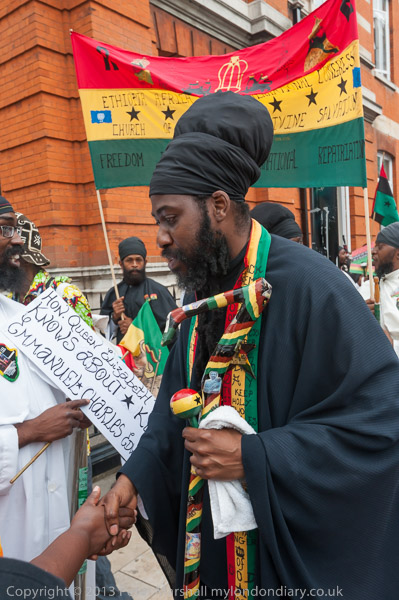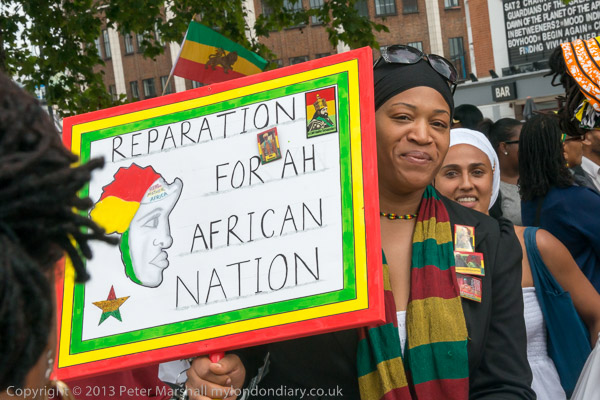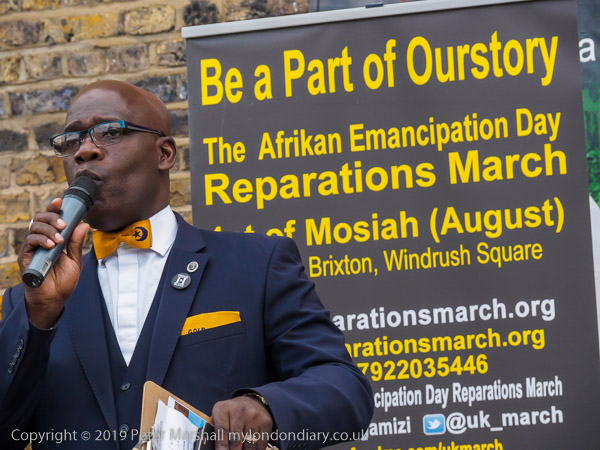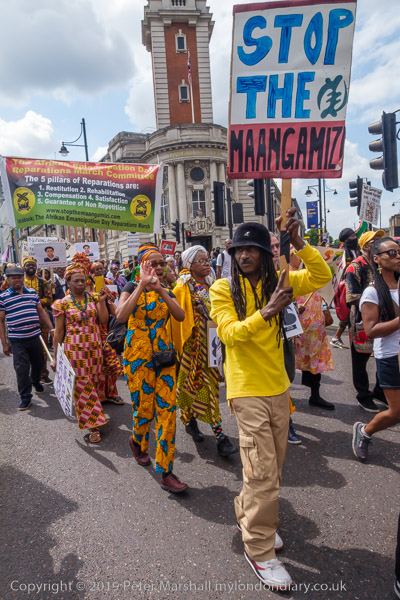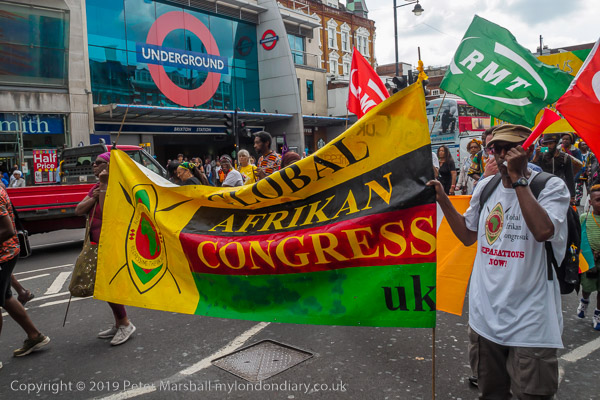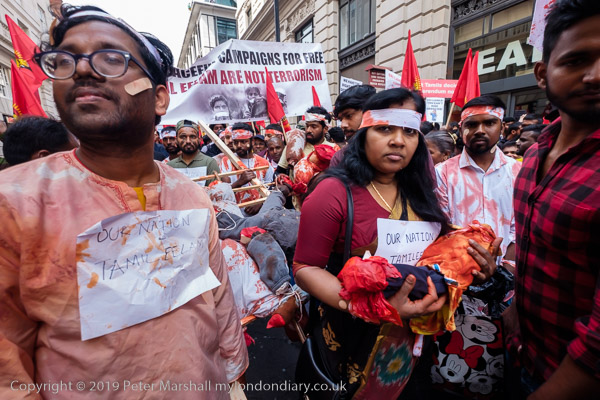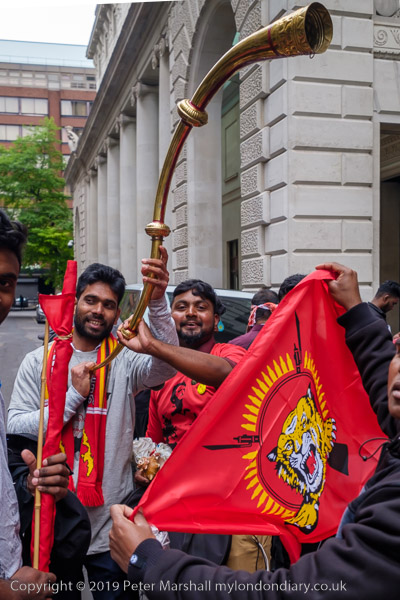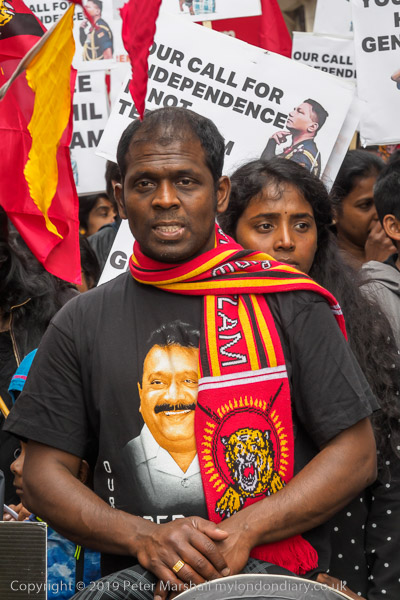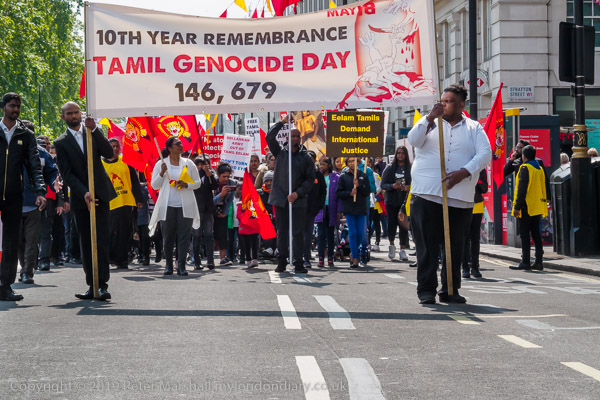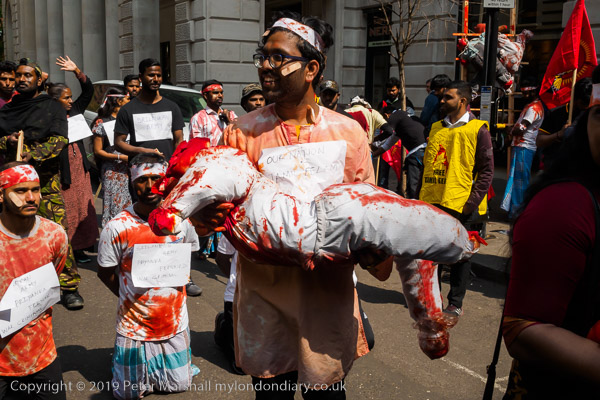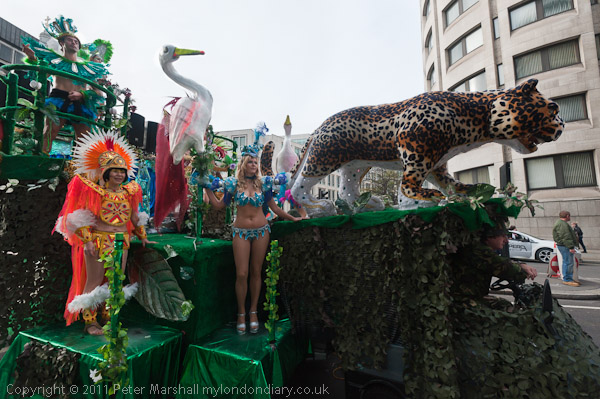
Ten years ago was a very busy day for me in London. Saturday 12th November was the day of the annual Lord Mayor’s Show, which I’d photographed occasionally in previous years, but probably would not have bothered with, but it was made far more interesting this year by the presence of the Occupy London camp outside St Paul’s Cathedral.
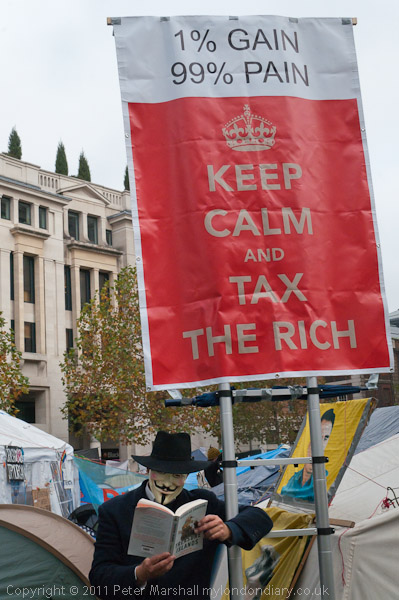
I went up quite early to photograph the camp where later in the day Occupy LSX were to hold there own alternative ‘Not the Lord Mayors Show’ festival of entertainment, and wandered around talking to people and taking a few pictures.
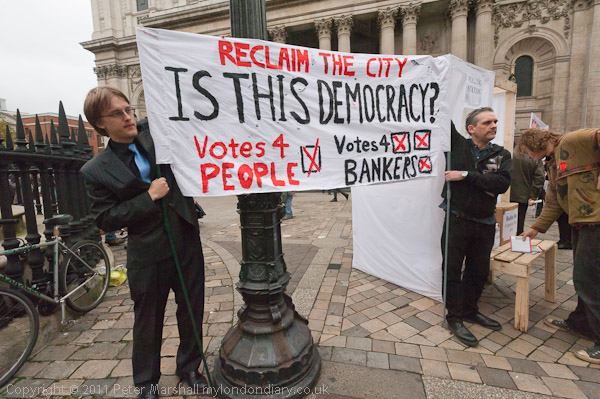
I also went to take photographs of some of those preparing to take part in the Lord Mayor’s Show, and then took pictures as the parade began. As I commented, “I found the marching servicemen, military vehicles and weapons and military bands that are a major element of it disturbing. Of course the event as a whole reflects earlier times, with the city aldermen and liverymen in quaint costumes, but it would be appropriate for it to present a rather more civilised face to the world.
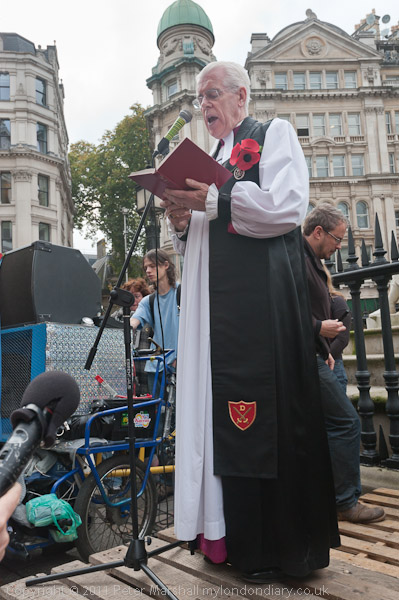
As in other years, the Lord Mayor’s coach stopped at St Pauls for him to be blessed by the Canon in Residence Rt Revd Michael Colclough. Occupy LSX asked the cathedral staff if the Canon would bless them too, and though the staff were very doubtful, the Canon came to talk with the people from Occupy and then blessed them too.
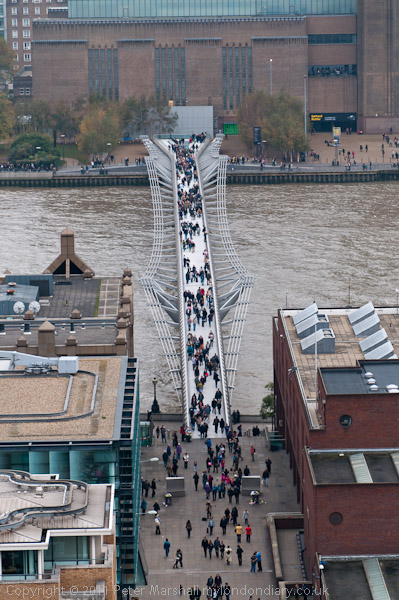
Entry to St Pauls, other than to take part in services usually involved paying a fee – back in 2011 it was £14.50 – but is free on the day of the Lord Mayor’s Show, and I took the opportunity to go in and up to the ‘Stone Gallery’ around the base of the dome (the higher ‘Golden Gallery’ was closed because of the crowds) and take some pictures there.
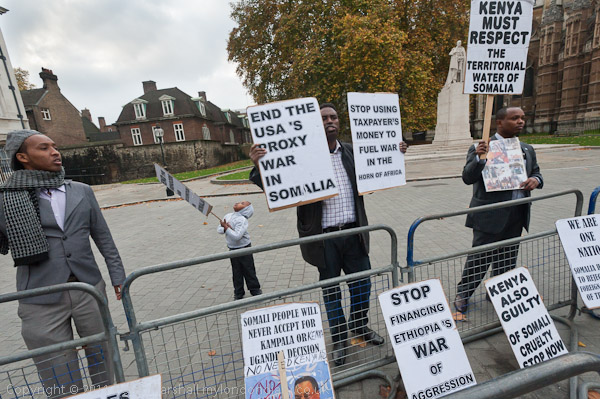
I took the District Line to Westminster for an advertised protest against Ethiopia’s war against Somalia, only to find there were only three men and a small boy at the advertised starting time, though they had a number of placards against what they describe as genocide and ‘Obama’s Proxy War’. They assured me more people would arrive and that the protest would continue for five or six hours, but when I came back again two house later there was no sign of it.
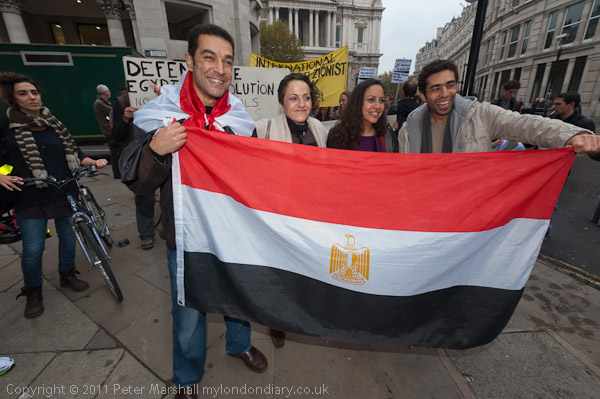
I returned to the City, where some protesters were setting off from the OccupyLSX camp at St Paul’s Cathedral for a ‘tour of shame’, visiting the offices of 3 arms dealers, Qinetiq, BAE and Rolls Royce, who went with David Cameron to Egypt in February to sell arms to the Egyptian army. This was a part of the International Day to Defend the Egyptian Revolution which had toppled the Mubarek regime, but the army had taken charge and there had been more than 12,000 trials in military courts, without the ability to call witnesses or access to lawyers in a programme of repression against the people. They called on the UK government to end support for the Egyptian military and stop selling them arms which might be used in further massacres such as that in Maspero a month earlier when soldiers opened fire killing 27 Coptic Christians and injuring over 300.
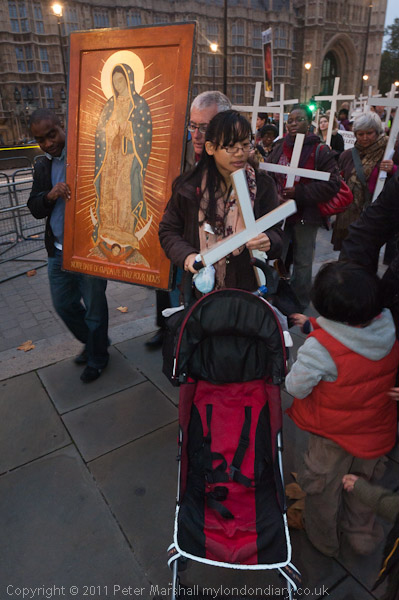
I left the marchers at Ludgate Circus and walked back to see what was happening with Occupy SLX at St Paul’s, then took the District Line again to Westminster to see if the Somali protest had grown. There was no sign of it, but I found another protest just leaving Old Palace Yard for a rally outside Westminster Abbey. This was the ‘500 Crosses for Life’ prayer procession, organised by EuroProLife UK, a “European ecumenical initiative” based in Germany with the full title “European Voice of the Unborn Children: Protect Our Life”, and there were several hundred people carrying white crosses.
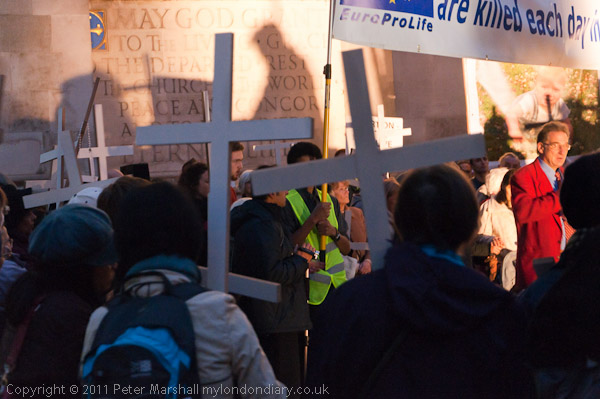
They had walked from Westminster Cathedral to a rally here and a speaker at the rally was describing and applauding protests outside clinics in Germany where abortions take place. I found this disturbing – and commented on My London Diary “People have a right to their views on abortion, and to hold peaceful protests such as this and of course to pray about the matter. But isn’t harassing women who go to clinics at what is almost certainly for them a very stressful time morally offensive, a demonstration of an un-Christian lack of love as well as a statement of lack of faith in the power of prayer?”
More on all these at:
Anti-Abortion Prayer Protest
Day to Defend the Egyptian Revolution
Somalis Protest Obama’s War
London From St Paul’s
Lord Mayor’s Show
Lord Mayor’s Show – Occupy London
